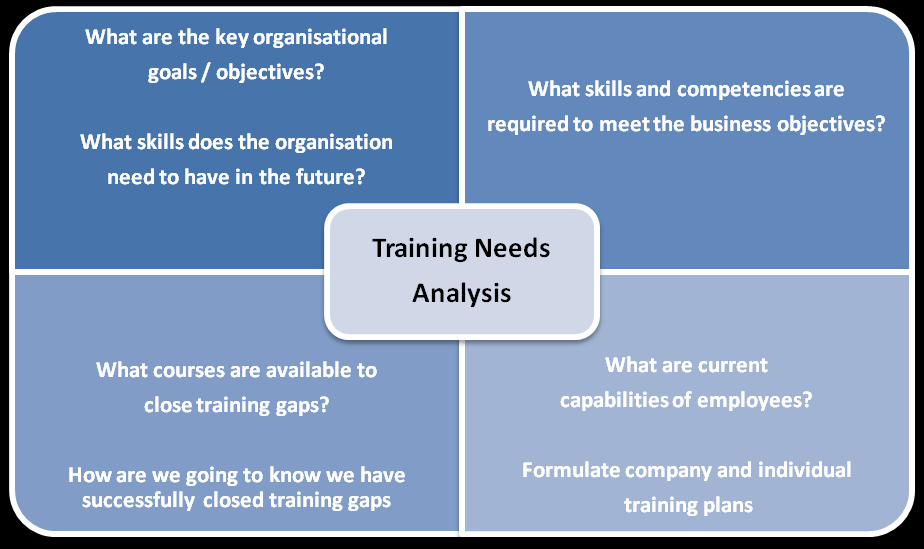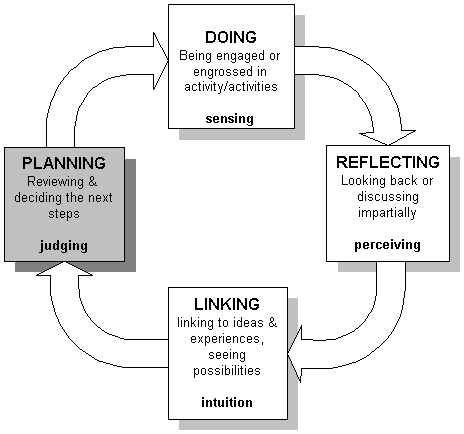Introduction
For most organizations, induction programs for new employees are becoming a common practice. This is because the retention of employees has become a critical problem owing to the changing workforce trends and business setting. Induction programs are being adopted to enable the employees adjust to the new work environment. This discussion explores the concept of induction and its benefits to both the organization and the employees.
Current Business context
Learning and Development in the Current Business context
Learning and development is the process of improving employees’ performance in the organization through training, education, and development. It entails a continuing commitment towards the development of employees as an important part of the operations of an organization. Learning and development involves continuous professional development of the employees and this gives them a chance to improve their knowledge, skills, and practice (Sadler-Smith 2006).
Learning and development has various benefits. It increases the confidence, motivation, morale, and satisfaction among the employees. Moreover, it enables the employees to perform their roles efficiently and therefore increases the productivity of the organization.
Learning and development also increases the organization’s capacity to keep pace with new methods and emerging technologies, and also increases innovation in terms of products and strategies. Proper learning and development also minimizes employee turnover. In addition, it enhances the organization’s image (Joy-Matthews, Megginson, & Surtees 2004).
Induction – Current Business context
This is a process through which firms welcome new workers and ensure that they are prepared for their new assignments. During this process, the employees should be trained on both the practical and theoretical skills (Toten 2005). The process of induction includes several activities.
The new employees are welcomed into the organization and given a general introduction. Employment’s terms and conditions are confirmed with the necessary paperwork being processed. Employees are then trained in areas such as occupational health & safety and equal opportunity. The employees are also informed about any legal and regulatory requirements.
They are also introduced to the company and given a tour around the organization. The new employees are also introduced to key staff members. The new employees also go through detailed on-the-job training. They are also trained on the organizational culture. They also learn information such as employee benefits and organizational procedures and policies (Stewart & Rigg 2011).
Best practices should be adopted in order to achieve a successful induction process. Firstly, the program for the employee induction should be scheduled in advance. A program for the induction process should be prepared, including details such as the specific induction activities that will be carried out at a specific time during the entire induction period.
The schedule should also include the name of the person responsible for every induction activity. All the people involved in the induction process should have access to the induction plan before the program commences. Moreover, all new employees should be assigned a member of staff to guide them during the induction process and make them feel welcome to the organization (ACAS 2007).
Induction has numerous benefits both to the organization and the employees. Induction ensures that the employees acquire information about the knowledge and skills necessary to effectively do the job. The employees are able to settle easily and confidently into their new roles in the organization. Induction also leads to better retention of new employees. It also increases the morale and productivity of new employees.
Besides, it assists in the quick integration of new employees into the working environment and increases their productivity. The induction procedure portrays a positive image of the firm to the new workforce making them feel appreciated and welcomed. Besides, the employees develop positive attitudes towards the organization and their roles and this leads to increased commitment and motivation.
In addition, it reduces the costs of recruitment and employee turnover. Furthermore, it enables the employees to understand how the organization runs and its culture, mission, vision, objectives, procedures, and policies. Induction also makes sure that the organization complies with the legal obligations covering the employees (Toten 2005).
Developing an effectual induction (training) line up
The programme should be developed with the consideration of all involved parties. This will mostly depend on the complexity as well as the size of the organization. Those involved include: line managers, senior most management team, representatives of trade unions, among others.
Typically induction entails the new member of staff meeting and paying attention to divergent group of individuals as they converse about features of the business. Other techniques include audio visual aids, on paper information, and group conversation.
Items to be touched on in a successful induction plan will include:
- Introduction to the organization as well as its management composition.
- Buildings layout (industrial unit and offices).
- Employment’s terms as well as the set conditions. This will involve clarification on the contact at hand.
- Information regarding pertinent personnel guidelines, such as preparation, promotion among others.
- Organization’s set practices and rules.
- Preparations for worker participation and communication.
- Welfare and employee benefits or facilities (Sadler-Smith 2006).
Learning Theory – Current Business context
Adult Learning
Adults have unique requirements, needs, and characteristics as learners. They only get committed to learning if they can see the relevance and application to real life of the objectives of learning. During professional development, adults should be given some control over their learning as they will not accept learning activities that may seem to undermine their competence. Adult learners also have a wealth of knowledge, experience, and competence and these must be accommodated in the planning of professional development (Siddons 2001).
Adult learners also need to protect their ego and therefore the learning environment should be such that there is no fear of being judged during professional development. Moreover, adult learners need to perceive the connection between their day-to-day roles and professional growth. They also need real and direct experiences to apply the learning at the workplace (Conlan, Grabowski, & Smith 2003).
Training Needs Analysis
This involves the process of identifying gaps at the place of work and suggesting whether training should be the ideal response. A consultant or an in-house trainer can perform a needs analysis in an organization. The analysis is carried out in a firm whenever there is a major development e.g. buying of new tools.
New training needs can be determined through observation, interviews, and questionnaires, analysis of the organization policy, job descriptions, appraisal reviews, and problem-solving conferences, among others. One should not rely on one method only but should use a combination of methods to determine the training needs (Reid, Barrington, & Brown 2004).

Source: (Bartram & Gibson 2000).
Needs assessment occur in three levels: individual, task, and organizational. Individual assessment looks at how well the worker is carrying out his work thus determining those to be trained and the skills to be taught.
Task assessment offers data regarding a given job and the proficiency, understanding, attitudes as well as capability to attain best possible performance. Organizational analysis on the other hand focuses on organization’s effectiveness determining the areas in which training is required as well as the conditions of conducting the same (Reid, Barrington, & Brown 2004).
Learning Cycle
Employees undergo a learning cycle in going about their everyday experiences at the workplace and developing new capabilities and skills. The cycle includes four steps namely, doing, reflecting, linking, and planning. Doing involves getting engaged and having the awareness of the activities that one is taking part in. Reflecting refers to the process of appraising and summarizing the activities that have already taken place.
Linking involves making relations with previously acquired knowledge. Planning involves using the acquired knowledge to improve the work processes and come up with new ways of doing things. For effective learning to take place, individuals should engage in every stage of the learning cycle (Taylor 2010).

Source: (Taylor 2010).
Learning Styles
Different people prefer different techniques and styles of learning. Each person has a combination of learning styles. Some of the learning styles include visual, aural, verbal, kinesthetic, logical, social, and solitary. People who use the visual learning style prefer to use images, pictures, and spatial learning. Aural style involves the use of music and sound. The verbal style learners prefer to use words in writing and speaking.
Kinesthetic learners prefer to use the sense of touch (the hands, and the body). Logical style learners prefer the use of reasoning, judgment, and systems. Social learners prefer learning with other individuals in groups. On the other hand, solitary learners prefer to learn alone. Different learning styles utilize different brain parts. Learning styles influence the way people learn, recall information, and represent experiences (Sadler-Smith & Evans 2006).
Reference List
ACAS, 2007, Recruitment and Induction. Web.
Bartram, S & Gibson, B 2000, Training Needs Analysis Toolkit, London, HRD Press.
Conlan, J Grabowski, S & Smith, K 2003, Adult Learning. Web.
Joy-Matthews, J Megginson, D & Surtees, M 2004, Human Resource Development, 3rd Ed, London, Kogan Page.
Reid, M Barrington, H & Brown, M 2004, Human Resource Development: Beyond Training Interventions, 3rd Ed, London, CIPD.
Sadler-Smith, E 2006, Learning and Development for Managers: Perspectives from Research and Practice, UK, Blackwell.
Sadler-Smith, E & Evans, C 2006, Learning Styles in Education and Training, UK, Emerald Group Publishing.
Siddons, S 2001, Developing Your People, London, CIPD.
Stewart, J & Rigg, C 2011, Learning and Talent Development, London, CIPD.
Taylor, S 2010, Resourcing and Talent Management, 5th Ed, London, Chartered Institute of Personnel and Development.
Toten, M 2005, Induction: an Underrated Aspect of People Management. Web.